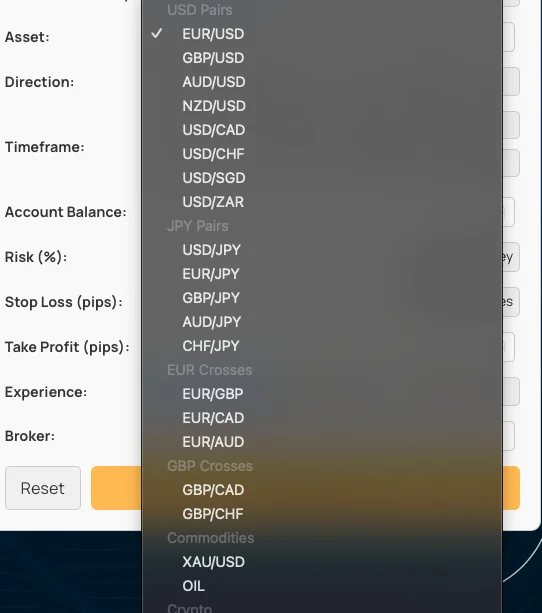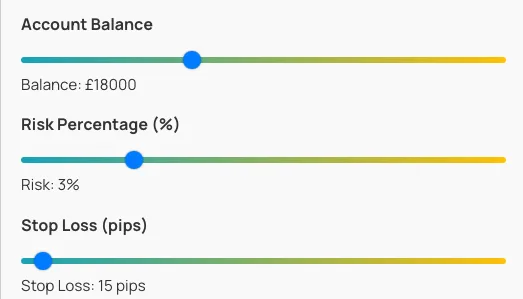Notifications

7 minutes, 4 seconds
-97 Views 0 Comments 0 Likes 0 Reviews

Commodities trading offers investors unique opportunities to profit from fluctuations in the prices of essential goods such as gold, oil, and agricultural products. However, effective risk management is crucial to ensuring success in this volatile market. One valuable tool that traders can utilize is a lot size calculator, which aids in determining the appropriate position size for each trade. This article outlines how to use a lot size calculator specifically for commodities trading, emphasizing its significance in managing risk and maximizing profits.
In commodities trading, the concept of lot sizes refers to the standardized quantity of a commodity being traded. Lot sizes can vary widely depending on the specific commodity being traded. For example, one standard oil futures contract typically represents 1,000 barrels of crude oil, while a gold futures contract represents 100 troy ounces. Understanding these standard lots is vital for traders, as they directly influence exposure to price movements. Accurate calculations of lot sizes are necessary to align trading strategies with risk management practices.
Calculating the correct position size is a critical aspect of risk management in trading. Position size determines how much of a commodity a trader should buy or sell based on their risk tolerance and trading capital. Risking too much on any single trade can lead to significant capital losses, while risking too little might prevent a trader from capitalizing on profitable opportunities. By calculating position size effectively, traders ensure they are trading within their comfort levels, allowing them to withstand market fluctuations more effectively and decrease the likelihood of emotional decision-making.
Using a lot size calculator for commodities trading is a straightforward process that can save traders substantial time and effort. First, traders need to know their total account balance and the percentage of that balance they are willing to risk on a single trade. A common guideline is to risk no more than 1-2% of the total account balance on a trade. Additionally, traders should determine the stop-loss distance in pips or points, which represents the amount they are willing to lose before exiting the trade. Once they have this data, traders can input it into the calculator, which will provide the optimal lot size for the trade in question, ensuring that risk parameters align with personal trading strategies.
Several factors influence how to calculate lot sizes in commodities trading effectively. The first factor is market volatility. Commodities can be affected by global events, natural disasters, and changes in demand, leading to sharp price fluctuations. This volatility means traders may want to adjust their lot sizes based on current market conditions. Additionally, the trading platform used can impact how lot sizes are represented; some platforms may have different minimum lot sizes or variations for specific contracts. Being aware of these factors ensures traders make well-informed decisions when using a lot size calculator.

Not all commodities operate under the same parameters, and a good lot size calculator can be adapted to accommodate these differences. For instance, when trading agricultural commodities like wheat or corn, the lot sizes are often based on bushels, whereas for precious metals like gold or silver, they are based on troy ounces. Understanding the unique specifications and standard lot sizes for each commodity allows traders to utilize the lot size calculator more effectively. By inputting the right parameters for different commodities, traders can ensure their risk management strategies remain robust across various asset classes.
Once a trader has used a lot size calculator to execute a trade, evaluating the results is essential for continuous improvement. By tracking the performance of trades—comparing intended risk to actual outcomes—traders can refine their calculations and adjust future positions accordingly. Keeping a trade journal that includes information about the calculated lot sizes, the rationales behind them, and the outcomes of each trade can provide valuable insights over time. Evaluating trade results contributes to better decision-making and helps traders develop a more nuanced understanding of position sizing in relation to market conditions.
Incorporating a lot size calculator into a comprehensive risk management strategy is crucial for commodities traders. By understanding their risk tolerance, calculating appropriate position sizes, and regularly reviewing trades, traders can establish a disciplined approach to trading. This emphasis on risk management allows them to preserve their capital while pursuing opportunities in the commodities markets. Moreover, integrating the lot size calculator into daily trading routines fosters a proactive mindset, equipping traders to respond effectively to changing market conditions without compromising their trading objectives.
In summary, a lot size calculator is an essential tool for commodities traders looking to enhance their risk management strategies. By following the steps outlined in this article, traders can make informed decisions regarding position sizes, ultimately leading to more successful trading experiences. Understanding the significance of lot sizes, using the calculator effectively, and adapting to different commodity specifications will.

